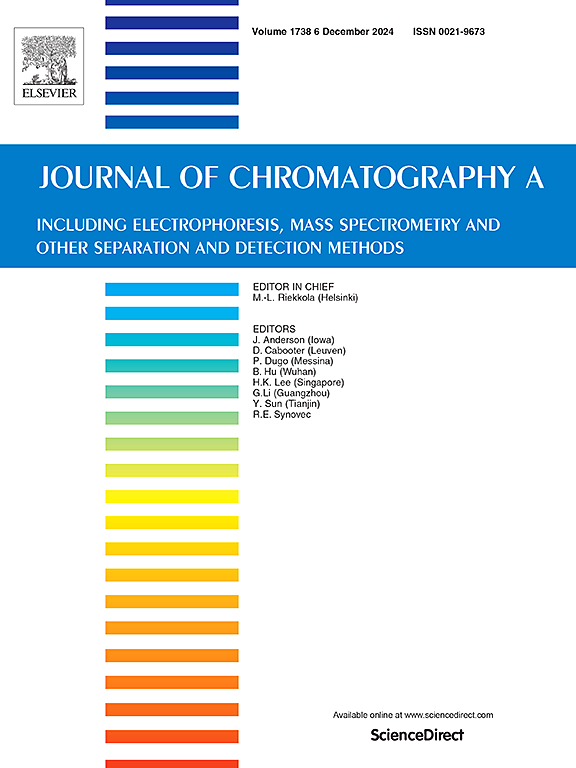Real-time monitoring of contaminants of emerging concern in effluent wastewater with dynamic headspace gas chromatography mass spectrometry analysis
IF 3.8
2区 化学
Q1 BIOCHEMICAL RESEARCH METHODS
引用次数: 0
Abstract
Wastewater treatment plants are a major source of contamination, introducing pharmaceuticals, pesticides, and combustion products into aquatic environments. Currently, real-time monitoring of parameters such as nitrate and ammonia enables automatical control of these plants. In this paper we present the implementation and development of a dynamic headspace gas chromatography mass spectrometry method for real-time monitoring of contaminants of emerging concern in effluent wastewater. We observed a clear relation between polarity, water solubility, and analytical sensitivity, with the lowest sensitivity for the most polar compounds. Limits of quantification ranged from 15 to 3000 ng L-1 in full scan mode depending on the physico-chemical properties of the internal standards. Both the proprietary software MassHunter and open-source software PARADISe were used for non-target screening. Both software solutions were in general able to identify similar compound structures and sample time profiles using the specified data processing methods. The identified non-target compounds were typically semipolar aromatic compounds such as fuel-related compounds, transformation products from biological wastewater treatment, and compounds such as the UV blocker benzophenone and the odorant amberonne.
求助全文
约1分钟内获得全文
求助全文
来源期刊

Journal of Chromatography A
化学-分析化学
CiteScore
7.90
自引率
14.60%
发文量
742
审稿时长
45 days
期刊介绍:
The Journal of Chromatography A provides a forum for the publication of original research and critical reviews on all aspects of fundamental and applied separation science. The scope of the journal includes chromatography and related techniques, electromigration techniques (e.g. electrophoresis, electrochromatography), hyphenated and other multi-dimensional techniques, sample preparation, and detection methods such as mass spectrometry. Contributions consist mainly of research papers dealing with the theory of separation methods, instrumental developments and analytical and preparative applications of general interest.
 求助内容:
求助内容: 应助结果提醒方式:
应助结果提醒方式:


